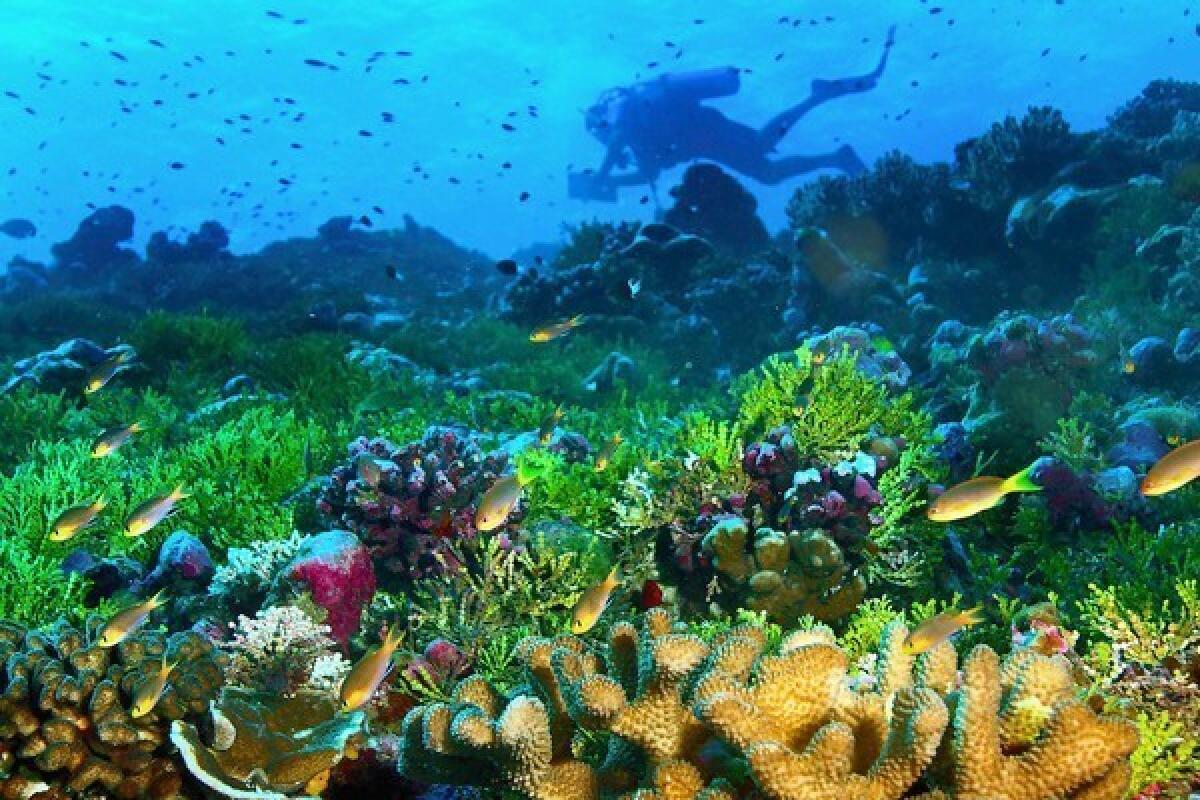U.S. seeks to protect 66 kinds of coral

- Share via
The federal government on Friday proposed protecting 66 kinds of corals under the Endangered Species Act, an acknowledgment that these reef-building animals are suffering so many insults they are threatened with extinction.
The proposal, which covers corals in the Pacific and the Caribbean, lists 19 ways that corals are under assault. They include overfishing, pollution, heat-stroke, disease and dissolving in seawater that is turning more acidic.
A team of scientists from the National Marine Fisheries Service spent more than three years reviewing the health of these reef-building corals before proposing their protection. Seven of the coral species can be found in U.S. waters off Florida and Caribbean islands. The other 59 are in the Pacific around the Hawaiian Islands, the Northern Marianas Islands, the Line Islands and American Samoa.
“Our science team found that these corals face many, many threats,” said Lance Smith, a supervisory biologist in the fisheries service in Honolulu. “When you put them together, they act in ominous ways.”
The government was prodded into action by the Center for Biological Diversity, a nonprofit group that sued in federal court and forced a decision that must be completed within a year.
The world’s oceans contain more than 700 species of stony corals, small animals that live in colonies and form elaborate and colorful structures with exoskeletons that resemble everything from the folds of a human brain to the horns of elk or deer.
A third of these reef-building corals are listed as threatened with extinction by the World Conservation Union, an international consortium of scientists. The Center for Biological Diversity used this international list to push for U.S. protection of those in American waters.
The fisheries service also proposed to reclassify staghorn and elkhorn corals from “threatened” to the more severe category of “endangered.” These two fast-growing corals helped form the Florida Keys and the reefs around most islands in the Caribbean. About 98% of staghorn and 90% to 95% of elkhorn coral have disappeared since 1980.
These corals have become overgrown by seaweed when too many algae-eating fish are removed from the reefs. They have suffered from disease and suffocation when bathed in nutrient-rich sewage and farm runoff, particularly in South Florida.
Corals have been hit by periodic “bleaching” events, which is a sort of heatstroke, when waters get too hot. It’s a result of rising global temperatures because of the buildup of carbon dioxide in the atmosphere — mostly from burning fossil fuels.
The oceans have absorbed about a quarter of the C02 accumulated since the dawn of the Industrial Revolution, setting off a chemical reaction that makes seawater increasingly acidic. That poses another long-term threat to corals, which rely on alkaline seawater to provide them building materials to form their exoskeletons.
Federal scientists cited ocean acidification as one of the most serious threats to corals surviving to the end of the century. The worst threats, according to federal rankings, were hot water causing bleaching and the spread of disease. Farther down the list were more localized problems from overfishing, nutrient pollution, the discharge of sediments and toxic chemicals from the land, and destructive fishing practices.
All this raises the question of what federal protections might accomplish.
Smith said it’s easy to be cynical about the future of corals, especially in the face of global warming. But, he said, the law can make a difference.
“If you reduce the local threats,” Smith said, “corals are more likely to be resilient to the global threats.”
More to Read
Sign up for Essential California
The most important California stories and recommendations in your inbox every morning.
You may occasionally receive promotional content from the Los Angeles Times.













